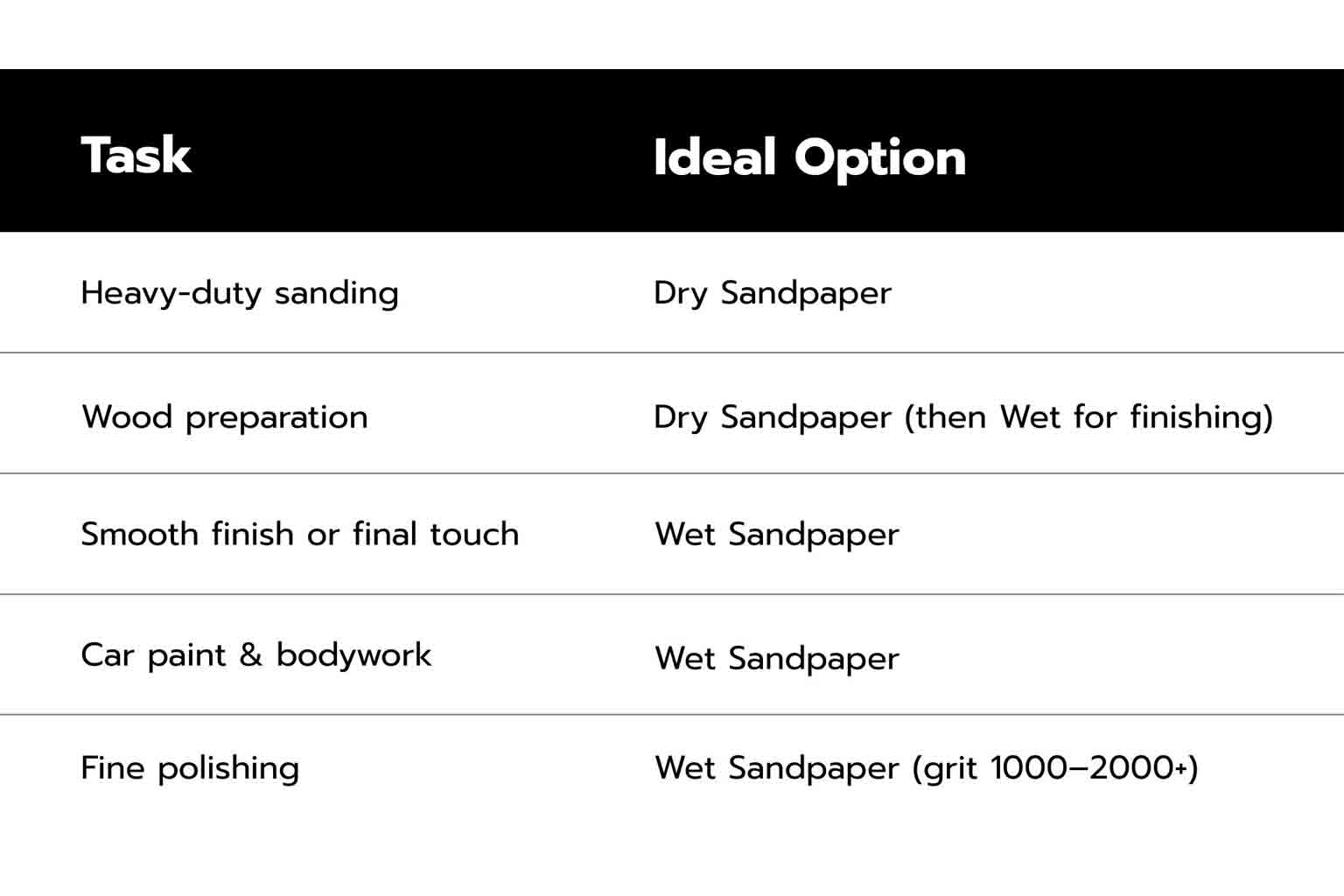Key Differences and How to Use Them
When it comes to surface preparation in painting, woodworking, auto body work, or finishing tasks, sandpaper is an essential tool. Sandpaper generally comes in two main types: wet sandpaper and dry sandpaper. While they may look similar, each type serves a distinct purpose and performs differently depending on the application.
What is Wet Sandpaper?
-
- Key Features:
- Made from water-resistant materials like silicon carbide
- Designed to be used with water or soapy water to reduce heat and dust
- Typically has a flexible, waterproof backing
- Advantages:
- Key Features:
-
-
- Minimizes dust while sanding
- Creates a smoother finish
- Ideal for fine sanding or polishing
- Water acts as a lubricant, preventing scratches and heat buildup
- Common Uses:
- Automotive paint prep and polishing
- Finishing wood or plastic surfaces
- Smoothing metal before buffing or coating
-
What is Dry Sandpaper?
-
- Key Features:
- Used without water
- Often made with aluminum oxide, a tough and durable abrasive
- Suitable for coarse sanding and rough surfaces
- Advantages:
- Easy to use with no need for water
- Great for removing paint, rust, or uneven textures
- Compatible with power sanders for faster results
- Common Uses:
- Stripping paint or smoothing walls
- Sanding raw wood or metal
- Preparing surfaces before priming or painting
- Key Features:

Whether you’re refinishing furniture, detailing an automobile, or preparing a surface for painting, selecting the appropriate type of sandpaper is essential to achieving optimal results. By choosing the correct grit and matching it to the material, you can enhance efficiency, ensure a smoother finish, and significantly improve the overall quality of your work.





